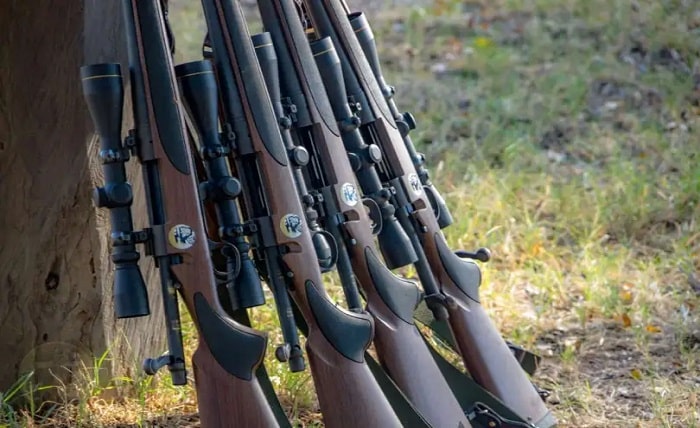Considerations for Selecting Your Ideal Hunting Firearm

Imagine standing in the crisp dawn air, surrounded by nature, anticipating the thrill of the hunt. Picture the sun slowly rising over a vast landscape, casting its golden hues on the wilderness. In such moments, your hunting firearm becomes a key element in the hunt’s success. To enhance your hunting experience, consider exploring expert smithing services from reputable gun stores.
Selecting the right firearm is not merely about aesthetics or personal preference; it can determine the success of your hunting expedition. Whether you’re an experienced hunter or a novice on your first venture, understanding the considerations in choosing your ideal hunting firearm is crucial.
Purpose and Use
When selecting a hunting firearm, understanding its purpose and intended use is key. This begins with recognizing the diversity among game species and their habitats. Firearms vary significantly in their suitability for different types of game, whether it’s the small, swift movements of upland birds or the larger, robust stature of big game animals. Each requires a specific caliber, action, and often specialized ammunition for ethical and effective hunting.
Type of Game
Different firearms cater to various game sizes and behaviors. For instance, a shotgun may be ideal for birds due to its spread pattern, while rifles excel for larger game with precise, long-range shots. Understanding these distinctions helps match the firearm’s capabilities to the behavior and habitat of the targeted game, ensuring humane and efficient hunting practices.
Hunting Style and Terrain
The terrain and hunting style significantly influence firearm choice. Maneuverability is crucial in dense forests, while long-range accuracy matters in open fields. Stalking, still hunting, or stand hunting each demands specific firearm features to enhance success. Tailoring your firearm choice to your preferred hunting technique optimizes your hunting experience and increases the likelihood of a successful hunt.
Firearms Specifications
The specifications of a firearm—such as caliber, ammunition, and action—play a key role in its performance and suitability for hunting.
Caliber and Ammunition
Caliber, the diameter of the firearm’s bore, influences accuracy, recoil, and its suitability for different game types. Larger calibers offer more stopping power but might come with increased recoil. Selecting the right ammunition involves a delicate balance between power, precision, and ethical considerations, ensuring that your choice aligns with both hunting goals and the environment where you’ll be hunting.
Action and Mechanisms
The firearm’s action dictates how it loads, fires, and ejects cartridges. Common actions include bolt action, semi-automatic, and others with distinct advantages. Bolt actions typically offer exceptional accuracy and reliability, while semi-automatics provide rapid-fire capabilities. The choice of action significantly impacts a firearm’s reliability, precision, and suitability for different hunting scenarios. Understanding these mechanisms aids in selecting a firearm that matches your hunting requirements and preferences.
Ergonomics and Comfort
Considering the ergonomics and comfort of a hunting firearm is vital for an enjoyable and effective hunting experience.
Fit and Feel
A firearm that feels right in your hands can greatly impact your shooting comfort and accuracy. Factors like grip, stock length, and overall weight influence how comfortable and manageable the firearm is during extended periods of use. Understanding these elements ensures a more personalized and comfortable shooting experience, enhancing both control and accuracy.
Recoil Management
Managing recoil is crucial for both accuracy and shooter comfort. Techniques like incorporating recoil pads, adjusting the firearm’s weight, and considering specific firearm designs aid in mitigating the impact of recoil.
Excessive recoil affects accuracy and can induce shooter fatigue, potentially compromising the hunt. Recognizing the correlation between recoil and accuracy guides the selection of a firearm that minimizes discomfort while maximizing shooting efficiency.
Budget and Value
Understanding the financial aspect of purchasing a hunting firearm is essential, encompassing both the initial investment and the long-term value it offers. Maintenance, accessories, and ammunition costs should also be factored in. Regular maintenance, necessary accessories for optimal performance, and ongoing ammunition expenses contribute to the total cost of ownership.
Initial Investment vs. Long-Term Value
When considering a firearm purchase, weighing the initial cost against its long-term durability and performance is essential. Sometimes, a higher initial investment reflects superior quality and longevity, potentially outweighing the immediate expense by offering reliability and sustained effectiveness over time. Finding the balance between the upfront cost and the firearm’s long-term value is key to making a sound investment.
Quality Relates to Cost: Finding the Sweet Spot
Quality often aligns with cost, but it’s not always linear. A higher price tag doesn’t guarantee the best value, nor does a lower price necessarily imply inferior quality. Finding the “sweet spot” involves assessing the quality-price ratio, considering reputable brands, user reviews, and expert recommendations. It’s about identifying where quality, durability, and cost intersect for the best overall value.
Legal and Ethical Considerations
Understanding the legal and ethical aspects of owning and using a hunting firearm is fundamental for responsible and lawful hunting practices.
Compliance with Regulations
Understanding the local and federal laws regarding firearms is crucial. Knowledge about licensing, permits, and any restrictions specific to certain areas or game types is essential for legal compliance. Staying informed and abiding by these regulations ensures lawful ownership and use of firearms for hunting purposes.
Ethical Hunting Practices
Ethics play an essential role in hunting, and firearm selection is no exception. Hunters hold ethical responsibilities in their choice of firearms, ensuring a balance between capability and ethical hunting practices such as fair chase.
It involves acknowledging the humane aspects of hunting, avoiding unnecessary suffering for the game, and ensuring that the firearm used aligns with the principles of ethical hunting. Balancing the firearm’s capabilities with ethical considerations is essential for responsible hunting practices.
Emphasizing the importance of a well-informed decision, this journey towards the perfect hunting firearm requires a holistic approach. Striking the right balance between initial investment and long-term value, understanding legal responsibilities, and prioritizing ethical hunting practices collectively contribute to a more meaningful and responsible hunting experience. Let the considerations in this guide lead you toward a firearm choice that enhances your hunting prowess. May your future hunts be both successful and respectful to the wild landscapes you explore.





